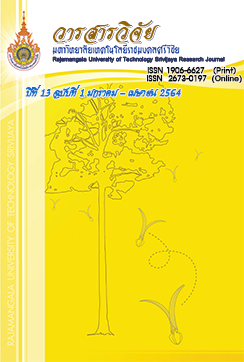Effect of Ozone Treatments on Nile Tilapia Mince (Oreochromis niloticus) Off-Odor
Keywords:
earthy smell, fishy odor, fish mince, utilization of waste, isothermalAbstract
Nile tilapia is a freshwater fish that often has off-odors, which causes many consumers to reject products made from this species. Therefore different types of chemicals are used to reduce the odor. However, some treatments may leave chemical residues that are not safe for consumers. Ozone has been used to reduce odor because it has strong oxidizing properties and leaves no residue, and therefore is safe for consumers. This study aimed to reduce off-odors in Nile tilapia with different ozone treatments. Fish flesh were treated with water (control) and seven ozone treatments. Then, volatile compounds were measured by GC / MS analysis, which identified a total of 18 volatile compounds in the fish flesh. Volatile compounds found in high proportions in all experiments were methoxy phenyl oxime (giving fishy off-odor), hexanal (fatty odor) and 1-Octen-3-ol (mushroom odor). The level of these compounds decreased with different ozone treatments compared to treatment with water (control). Ozone treatments had a slight effect on fat and protein content in tilapia flesh. Ozone flotation treatment for 30 min provided the best reduction of off-odor from fish. Therefore, ozone treatment is suitable for the preparation of tilapia flesh to be used in products that will be accepted by consumers.
References
Alkoaik, F.N. 2009. Ozone treatment of animal manure for odour control. American Journal of Environmental Sciences 5(6): 765-771.
AOAC. 2012. Official Methods of Analysis 19thed. AOAC International, Gaithersburg.
Brodowska, A.J., Nowak, A. and Smigielski, K. 2017. Ozone in the food industry: Principles of ozone treatment, mechanisms of action, and applications: An overview. Critical Reviews in Food Science and Nutrition 13(58): 2176-2201.
Cataldo, F. 2003. On the action of ozone on proteins. Polym Degradat Stab 82(1): 105-114.
Dew, T.L. 2005. Ozone degradation of off-flavors in catfish. Master Thesis of Food Science, Louisiana State University, USA.
Frankel, E.N. 1993. In search of better methods to evaluate natural antioxidants and oxidative stability in food lipids. Trends Food Science and Technology 4(7): 220-225.
Frankel, E.N. and Tappel, A.L. 1991. Headspace gas chromatography of volatile lipid peroxidation products from human red blood cell membranes. Lipids 26(6): 479-484.
Fisheries Development Policy and Strategy Division. 2017. Fisheriesstatistics of Thailand 2017. Department of Fisheries, Bangkok. (in Thai)
Gonçalves, A.A. and Gagnon, G.A. 2011. Ozone Application in Recirculating Aquaculture System: An Overview. International Ozone Association 33(5): 345-367.
Gottschalk, C., Libra, J.A. and Saupe, A. 2000. Ozonation of Water and Waste Water. Wileyvch, Michigan.
Gunten, U.V. 2007. The basics of oxidants in water treatment. Part B: ozone reactions. Water Science & Technology 12(55): 25-29.
Gunten, U. 2003. Ozonation of Drinking Water: Part II. Disinfection and Byproduct Formation in Presence of Bromide, Iodide or Chlorine. Water Research 37(7): 1469-1487.
Li, J., Liu, Q., Wang, J., Liu, Q. and Peng, Z. 2019. Effect of red pepper (Zanthoxylum bungeanum Maxim.) leaf extract on volatile flavor compounds of salted silver carp. Food Science & Nutrition 8(3): 1355-1364.
Lu, Q., Liu, F. and Bao, J. 2019. Volatile components of American silver carp analyzed by electronic nose and MMSE‐GC‐MS‐O. Journal of Food Biochemistry 43(11): 1-14.
Miller, F.A., Silva, C.L.M. and Brandao, T.R.S. 2013. A Review on ozone-based treatments for fruit and vegetables preservation. Food Engineering Reviews 5(2): 77-106.
Nielsen, S.S. 2010. Food Analysis Laboratory Manual (2nded). Springer, London.
Peinado, I., Miles, W., and Koutsidis, G. 2016. Odour characteristics of seafood flavour formulations produced with fish by‐products incorporating EPA, DHA and fish oil. Food Chemistry 212(1): 612-619.
Pratama, I.R., Rostini I. and Lviawaty, E. 2018. Volatile components of raw Patin Catfish (Pangasius hypophthalmus) and Nile Tilapia (Oreochromis niloticus). Earth and Environmental Science 176(1):1-8.
Riebel, A.H., Erickson, R.E., Abshire, C.J. and Bailey, P.S. 1960. Ozonation of Carbon-Nitrogen Double Bonds. I. Nucleophilic Arrack of Ozone. Journal of the American Chemical Society 82(7): 1801-1807.
Sahab, A.F., Hassanien, F.R., El-Nemr, S.E., Abdel-Alim, H.A. and Abdel-Wahhab, M.A. 2013. Effect of Ozone Gaseous on Aflatoxin Degradation and Fat and Protein Content in Peanut Seeds. Journal of Applied Sciences Research 9(3):2170-2175.
Selli, S., Prost, C. and Serot, T. 2009. Odour-active and off-odour components in rainbow trout (Oncorhynchus mykiss) extracts obtained by microwave assisted distillation solvent extraction. Food Chemistry 114(1): 317-322.
Sonntag, C. and Gunten, U. 2012. Chemistry of ozone in water and wastewater treatment: from basic principles to applications. IWA Publishing, London.
Thipbharos, P. 2014. Reduction of Earthy-flavour and Geosmin content in Frozen Thai PangaFish (Pangasius sp.) Fillets. KKU Science Journal 42(2): 380-392. (in Thai)
Tiwtha, O. and Usawakesmanee, W. 2012. The reduction of fishy odor in salmon skin by washing with salt solution, pp. 1-9. In 1stMae Fah Luang University Special volume international conference. Mae Fah Luang University, Chiang Rai.
Tohmadlae, P., Worawattanamateekul, W. and Hinsui, J. 2019. Tilapia gelatin: elimination of Fishy Odor. RMUTSV Research Journal 11(3): 1-8.
Yarnpakdee, S., Benjakul, S. and Kristinsson, H.G. 2012. Effect of pretreatments on chemical compositions of mince from Nile tilapia (Oreochromis niloticus) and fishy odor development in protein hydrolysate. International Aquatic Research 4(7): 1-6.
Yufei, C., Hu, H. and Bafang, L. 2016. Identification of Volatile Compounds in Codfish (Gadus) by a Combination of Two Extraction Methods Coupled with GC-MS Analysis. Ocean University of China 15(3): 509-514.
Zhang, T., Xue, Y., Li, Z., Wang, Y., Yang, W. and Xue, C. 2016. Effects of ozone on the removal of geosmin and the physicochemical properties offish meat from bighead carp (Hypophthalmichthys nobilis). Innovative Food Science and Emerging Technologies 34(2016): 16-23.
Downloads
Published
How to Cite
Issue
Section
License
The content and information in the article published in Journal of Rajamangala University of Technology Srivijaya It is the opinion and responsibility of the author of the article. The editorial journals do not need to agree. Or share any responsibility.







